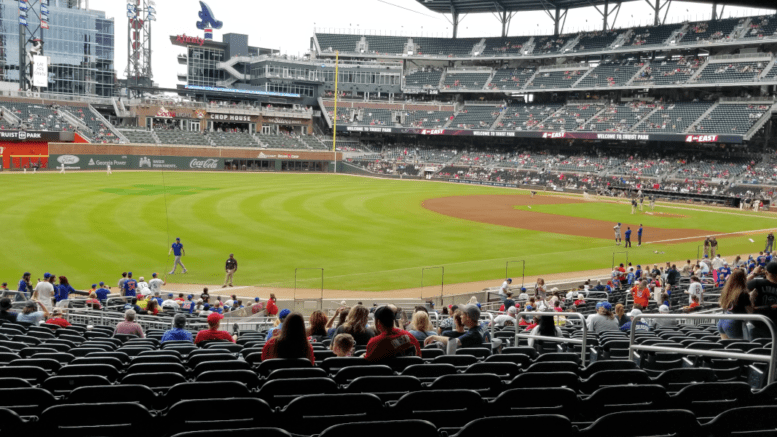By John A. Tures, Professor of Political Science, LaGrange College
Those tired of the Atlanta Braves string of success across the decades seem ever gleeful to report “the cupboard is bare,” when it comes to the Cobb County-located franchise, hoping the good times are coming to an end. But if any franchise knows how to get blood from a stone, or find a diamond in the rough, it’s the folks whose address is 755 Battery Avenue.
At the start of the season, baseball experts claimed that the Atlanta Braves had the worst farm system in America since our agriculture during the Dust Bowl. Major League Baseball ranked the Braves dead last, while Keith Law pegged the Braves at 29th. Even the Atlanta Journal Constitution gloomily claimed “Understandably, Braves farm system isn’t what it used to be.” Flipboard called for a total restock. Bleacher Report had the Atlanta Braves at 30th.
The minor league records of the Atlanta Braves farm systems add to those assessments, as each franchise currently owns a losing record. As of this article’s writing, the Gwinnett Stripers are 33-46, tenth in the International League’s West Division. The Mississippi Braves are 39-40 in the Southern League’s South Division. The Rome Braves have 31 wins and 38 losses in the South Atlantic League, fifth in the South Division of the league. And the Augusta Green Jackets are 34-37 while playing in the Carolina League, fourth in the South Division. The FCL Braves also have a losing record. Of those franchises, only Rome and Augusta had winning records in 2022.
You can see title-parched media markets for New York, Philadelphia, Miami and others in the Midwest and West Coast soaking up the good news, eager for Atlanta to go the way of the 1915-1947 Boston Braves, or at least the 1970s at Fulton County Stadium.
They’ll probably be disappointed, again.
Currently, the Braves have a lot of outstanding former prospects. We now call them All-Stars, many of whom are locked up with long-term contracts. One only needed to the see the game in Seattle the fifth inning with a full-infield of Braves, and that didn’t count their pitchers and a guy named Ronald Acuna, and a new acquisition named Sean Murphy, for whom several prospects were traded for.
Plus, we know that the Atlanta management team and scouting department seem to have a better assessment of the talent than the “experts.” In an earlier Cobb County Courier column months ago, I pointed out that those who claim to be in the know whiffed on predicting the success of the Rookie of the Year Michael Harris II, or the runner-up, Spencer Strider (now another All-Star). I also suggested keeping an eye on a guy named A.J. Smith-Shawver. See some other Braves prospects here. And don’t forget Braden Shewmake and Vaughn Grissom.
You’d like a farm system with winning franchises, either for future stars when starters are plucked away by baseball teams with bulging budgets, injury replacements, or even trade bait to get the necessary pieces for a playoff run. But the future’s still pretty bright for the Cobb County-based Braves, so much so that they still need shades.
That’s because the Atlanta Braves are tied with the New York Yankees for the third best record in Major League Baseball since 2018, only a few percentage points behind the Los Angeles Dodgers and Houston Astros. With a successful MLB draft, that trend is likely to continue on the Windy Ridge in Cobb County.
John A. Tures is a professor of political science at LaGrange College in LaGrange, Georgia. His views are his own. He can be reached at jtures@lagrange.edu. His Twitter account is JohnTures2.





